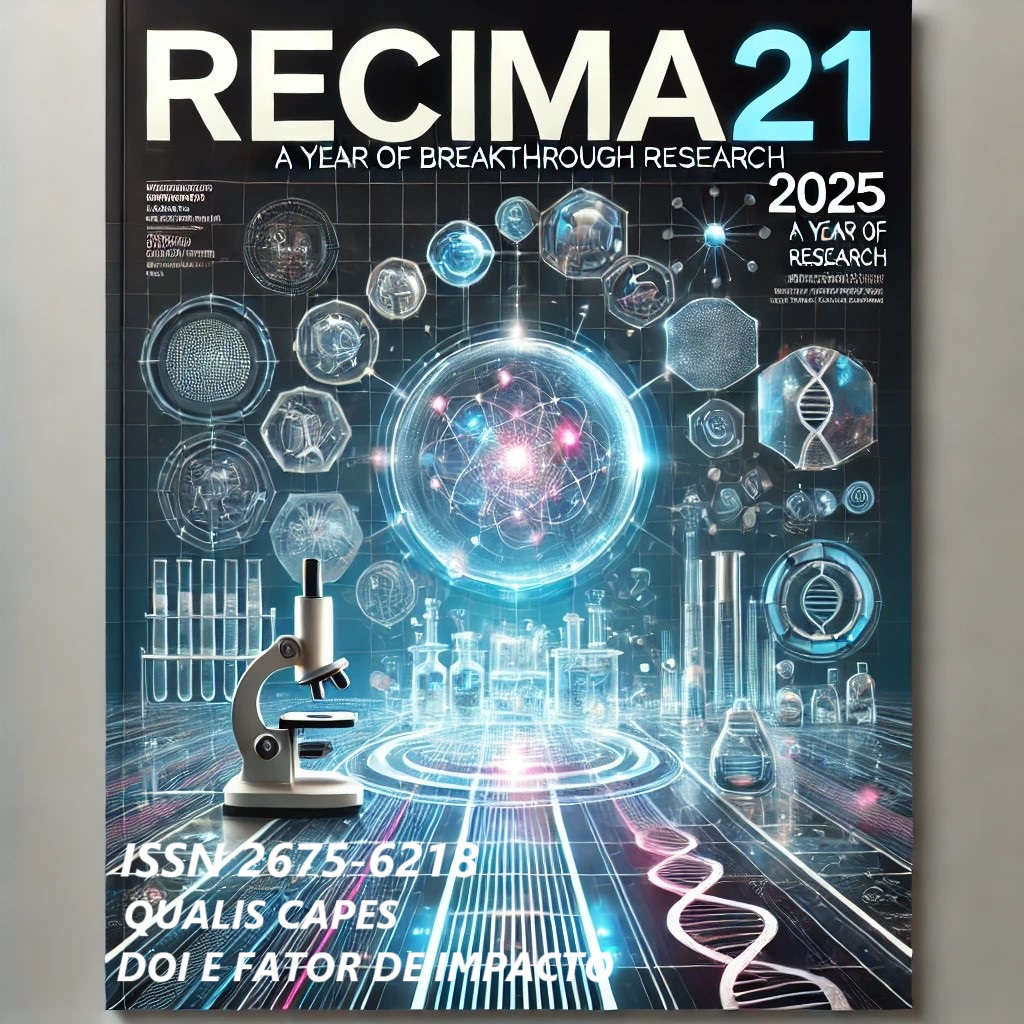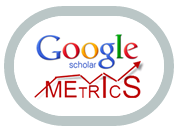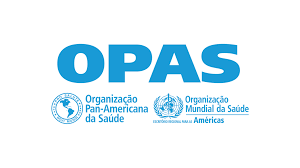ESTUDIO SOBRE LA INFLUENCIA DEL MATERIAL PARTICULADO FINO (PM 2,5) EN EL DESAROLLO DE NEOPLASIAS PULMONARES: UNA REVISÍON INTEGRADORA
DOI:
https://doi.org/10.47820/recima21.v6i10.6828Palabras clave:
Contaminación atmosférica, PM 2,5, Neoplasia pulmonarResumen
La contaminación atmosférica, especialmente por material particulado fino (PM2,5), representa un riesgo relevante para la salud pública, estando directamente asociada con el aumento de la incidencia y mortalidad por cáncer de pulmón. Este estudio, desarrollado mediante una revisión bibliográfica integradora, tuvo como objetivo analizar la influencia del PM2,5 en el desarrollo de neoplasias pulmonares. Se consultaron las bases de datos PubMed, BVS y SciELO, considerando publicaciones entre 2014 y marzo de 2025, en los idiomas portugués e inglés. Se aplicaron criterios de inclusión y exclusión, resultando en la selección de 10 artículos originales. Los datos analizados evidencian que la exposición crónica al PM2,5 está relacionada con el aumento del riesgo de cáncer de pulmón, incluso en concentraciones inferiores a los límites recomendados por organismos internacionales. Las poblaciones cercanas a zonas industriales, puertos y regiones afectadas por incendios forestales presentan un riesgo significativamente mayor. Estudios moleculares demuestran que el PM2,5 puede inducir alteraciones genéticas, activar vías oncogénicas, como Wnt/β-catenina, y promover metástasis, involucrando estrés oxidativo, inflamación crónica y fallas en la reparación del ADN. Se concluye que el PM₂,₅ actúa como un factor determinante en la carcinogénesis pulmonar, tanto en la inducción como en la progresión tumoral. Sus efectos se agravan con la exposición prolongada, incluso en niveles considerados seguros. Estos hallazgos refuerzan la urgencia de políticas públicas rigurosas para el control de la contaminación atmosférica.
Descargas
Referencias
BUSCH, P.; CIFUENTES, L. A.; CABRERA, C. Chronic exposure to fine particles (PM2.5) and mortality: evidence from Chile. Environ Epidemiol, Baltimore, v. 7, n. 4, p. e0253, 2023. DOI: 10.1097/EE9.0000000000000253. DOI: https://doi.org/10.1097/EE9.0000000000000253
CHEN, Y. et al. A multicenter-retrospective study of non-small-cell lung carcinoma harboring uncommon epidermal growth factor receptor (EGFR) mutations. Transl Lung Cancer Res, Hong Kong, v. 11, n. 2, p. 293-306, 2022. DOI: 10.21037/tlcr-21-919. DOI: https://doi.org/10.21037/tlcr-22-48
CHENG, I. et al. Traffic-related air pollution and lung cancer incidence: the California Multiethnic Cohort Study. Am J Respir Crit Care Med, New York, v. 206, n. 8, p. 1008-18, 2022. DOI: 10.1164/rccm.202107-1770OC. DOI: https://doi.org/10.1164/rccm.202107-1770OC
CROUSE, D. L. et al. Ambient PM2.5, O3, and NO2 exposures and associations with mortality over 16 years of follow-up in the Canadian Census Health and Environment Cohort (CanCHEC). Environ Health Perspect, Research Triangle Park, v. 123, n. 11, p. 1180-6, 2015. DOI: 10.1289/ehp.1409276. DOI: https://doi.org/10.1289/ehp.1409276
ERHUNMWUNSEE, L. et al. The association between polluted neighborhoods and TP53-mutated non-small cell lung cancer. Cancer Epidemiol Biomarkers Prev, Philadelphia, v. 30, n. 4, p. 681-8, 2021. DOI: 10.1158/1055-9965.EPI-20-1555. DOI: https://doi.org/10.1158/1055-9965.EPI-20-1555
FAN, W.; XU, L.; ZHENG, H. Using multisource data to assess PM2.5 exposure and spatial analysis of lung cancer in Guangzhou, China. Int J Environ Res Public Health, Basel, v. 19, n. 5, p. 2629, 2022. DOI: 10.3390/ijerph19052629. DOI: https://doi.org/10.3390/ijerph19052629
FU, J. et al. An ecological analysis of PM2.5 concentrations and lung cancer mortality rates in China. BMJ Open, London, v. 5, n. 9, p. e009452, 2015. DOI: 10.1136/bmjopen-2015-009452. DOI: https://doi.org/10.1136/bmjopen-2015-009452
GAO, Y. et al. Wildfire-related PM2.5 and cause-specific cancer mortality. Ecotoxicol Environ Saf, Orlando, v. 258, p. 115000, 2024. DOI: 10.1016/j.ecoenv.2024.115000. DOI: https://doi.org/10.1016/j.celrep.2024.115000
GOODARZI, B. et al. Investigating PM2.5 toxicity in highly polluted urban and industrial areas in the Middle East: human health risk assessment and spatial distribution. Sci Rep, London, v. 13, p. 17858, 2023. DOI: 10.1038/s41598-023-45052-z. DOI: https://doi.org/10.1038/s41598-023-45052-z
HE, Y. et al. Fine particulate matter associated mortality burden of lung cancer in Hebei Province, China. Thorac Cancer, Singapore, v. 9, n. 3, p. 297-303, 2018. DOI: 10.1111/1759-7714.12653. DOI: https://doi.org/10.1111/1759-7714.12653
HILL, W. et al. Lung adenocarcinoma promotion by air pollutants. Nature, London, v. 616, n. 7955, p. 12-23, 2023. DOI: 10.1038/s41586-023-05874-3. DOI: https://doi.org/10.1038/s41586-023-05874-3
HVIDTFELDT, U. A. et al. Long-term low-level ambient air pollution exposure and risk of lung cancer: a pooled analysis of 7 European cohorts. Environ Int, Oxford, v. 146, p. 106249, 2021. DOI: 10.1016/j.envint.2020.106249. DOI: https://doi.org/10.1016/j.envint.2020.106249
IIDA, M.; TAKEMOTO, K. A network biology-based approach to evaluating the effect of environmental contaminants on human interactome and diseases. Environ Health Insights, London, v. 12, p. 1178630218810160, 2018. DOI: 10.1177/1178630218810160. DOI: https://doi.org/10.1016/j.ecoenv.2018.05.065
INSTITUTO NACIONAL DE CÂNCER (INCA). Poluição do ar, câncer e outras doenças: o que você precisa saber? Rio de Janeiro: Ministério da Saúde, 2021. Disponível em: https://antigo.inca.gov.br/publicacoes/cartilhas/poluicao-do-arcancereoutrasdoencasoquevoceprecisa-saber. Acesso em: 2 set. 2025.
JAMAL-HANJANI, M. et al. Tracking the evolution of non–small-cell lung cancer. N Engl J Med, Boston, v. 376, n. 22, p. 2237-48, 2017. DOI: 10.1056/NEJMoa1616288. DOI: https://doi.org/10.1056/NEJMoa1616288
LETELLIER, N. et al. The role of neighborhood air pollution exposure on somatic non-small cell lung cancer mutations in the Los Angeles Basin (2013–2018). Int J Environ Res Public Health, Basel, v. 19, n. 17, p. 11027, 2022. DOI: 10.3390/ijerph191711027. DOI: https://doi.org/10.3390/ijerph191711027
LI, R.; ZHOU, R.; ZHANG, J. Function of PM2.5 in the pathogenesis of lung cancer and chronic airway inflammatory diseases. Oncol Lett, Athens, v. 15, n. 5, p. 7506-14, 2018. DOI: 10.3892/ol.2018.8355. DOI: https://doi.org/10.3892/ol.2018.8355
MANISALIDIS, I. et al. Environmental and health impacts of air pollution: a review. Front Public Health, Lausanne, v. 8, p. 14, 2020. DOI: 10.3389/fpubh.2020.00014. DOI: https://doi.org/10.3389/fpubh.2020.00014
MEI, F. et al. Long-term effects of air pollutants on respiratory and cardiovascular mortality in a port city along the Adriatic Sea. BMC Pulm Med, London, v. 23, p. 135, 2023. DOI: 10.1186/s12890-023-02629-8. DOI: https://doi.org/10.1186/s12890-023-02629-8
NAKHARUTAI, N.; NAKHAPAKORN, K.; SASIWIMOL, S. Impact of residential concentration of PM2.5 analyzed as time-varying covariate on the survival rate of lung cancer patients: a 15-year hospital-based study in upper Northern Thailand. Int J Environ Res Public Health, Basel, v. 19, n. 8, p. 4521, 2022. DOI: 10.3390/ijerph19084521. DOI: https://doi.org/10.3390/ijerph19084521
ORGANIZAÇÃO MUNDIAL DA SAÚDE (OMS). Air pollution. Geneva: WHO, 2024. Disponível em: https://www.who.int/health-topics/air-pollution. Acesso em: 2 set. 2025.
ORGANIZAÇÃO MUNDIAL DA SAÚDE (OMS). Health consequences of air pollution on populations. Geneva: WHO, 2024. Disponível em: https://www.who.int/news/item/25-06-2024-what-are-health-consequences-of-air-pollution-on-populations. Acesso em: 2 set. 2025.
POPE, C. A. et al. Lung cancer, cardiopulmonary mortality, and long-term exposure to fine particulate air pollution. JAMA, Chicago, v. 287, n. 9, p. 1132-41, 2002. DOI: 10.1001/jama.287.9.1132. DOI: https://doi.org/10.1001/jama.287.9.1132
SHI, Y. et al. PM2.5-induced alteration of DNA methylation and RNA-transcription are associated with inflammatory response and lung injury. Sci Total Environ, Amsterdam, v. 650, p. 2142-50, 2019. DOI: 10.1016/j.scitotenv.2018.09.085. DOI: https://doi.org/10.1016/j.scitotenv.2018.09.085
SINGH, T. et al. Exploring the relationship between air quality index and lung cancer mortality in India: predictive modeling and impact assessment. Sci Rep, London, v. 13, p. 17994, 2023. DOI: 10.1038/s41598-023-47705-5. DOI: https://doi.org/10.1038/s41598-023-47705-5
SOUZA, M. T.; SILVA, M. D.; CARVALHO, R. Revisão integrativa: o que é e como fazer. Einstein (São Paulo), São Paulo, v. 8, n. 1, p. 102-6, 2010. DOI: 10.1590/s1679-45082010rw1134. DOI: https://doi.org/10.1590/s1679-45082010rw1134
THANDRA, K. C. et al. Epidemiology of lung cancer. Contemp Oncol (Pozn), Poznan, v. 25, n. 1, p. 45-52, 2021. DOI: 10.5114/wo.2021.103829. DOI: https://doi.org/10.5114/wo.2021.103829
VLASSCHAERT, C. et al. Clonal hematopoiesis of indeterminate potential-associated non-small cell lung cancer risk is potentiated by small particulate matter air pollution among non-smokers: a novel somatic variant–environment interaction. MedRxiv, Cold Spring Harbor, 2024. DOI: 10.1101/2024.01.17.24301439. DOI: https://doi.org/10.1101/2024.01.17.24301439
WANG, T. H. et al. PM2.5 promotes lung cancer progression through activation of the AhR-TMPRSS2-IL18 pathway. EMBO Mol Med, Hoboken, v. 15, n. 6, p. e17014, 2023. DOI: 10.15252/emmm.202217014. DOI: https://doi.org/10.15252/emmm.202217014
WANG, Y. et al. Air pollution in heavy industrial cities along the northern slope of the Tianshan Mountains, Xinjiang: characteristics, meteorological influence, and sources. Environ Sci Pollut Res Int, Berlin, v. 30, n. 46, p. 100484-500, 2023. DOI: 10.1007/s11356-023-25757-0.
WU, X. et al. The epidemiological trends in the burden of lung cancer attributable to PM2.5 exposure in China. BMC Public Health, London, v. 21, n. 1, p. 1-10, 2021. DOI: 10.1186/s12889-021-10765-1. DOI: https://doi.org/10.1186/s12889-021-10765-1
XU, J. et al. CircCDR1as mediates PM2.5-induced lung cancer progression by binding to SRSF1. Ecotoxicol Environ Saf, Orlando, v. 249, p. 114367, 2023. DOI: 10.1016/j.ecoenv.2022.114367. DOI: https://doi.org/10.1016/j.ecoenv.2022.114367
YU, H. et al. Exosomes from PM2.5-treated human bronchial epithelial cells increase lung cancer metastatic potential. Biomed Environ Sci, Beijing, v. 35, n. 6, p. 491-500, 2022. DOI: 10.3967/bes2022.066.
Descargas
Publicado
Licencia
Derechos de autor 2025 RECIMA21 - Revista Científica Multidisciplinar - ISSN 2675-6218

Esta obra está bajo una licencia internacional Creative Commons Atribución 4.0.
Os direitos autorais dos artigos/resenhas/TCCs publicados pertecem à revista RECIMA21, e seguem o padrão Creative Commons (CC BY 4.0), permitindo a cópia ou reprodução, desde que cite a fonte e respeite os direitos dos autores e contenham menção aos mesmos nos créditos. Toda e qualquer obra publicada na revista, seu conteúdo é de responsabilidade dos autores, cabendo a RECIMA21 apenas ser o veículo de divulgação, seguindo os padrões nacionais e internacionais de publicação.













